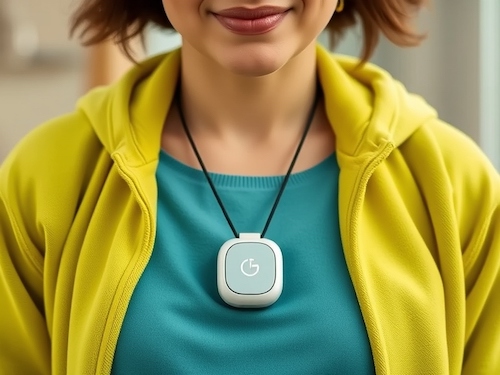Blog
Informative Articles on Supporting Independence
Benefits of alerting devices for the vulnerable

The Importance of Incident-Alerting Devices for Vulnerable Individuals. In today’s fast-paced and interconnected world, the safety and well-being of vulnerable individuals, such as the elderly, disabled, children, and those with medical conditions, are of paramount concern. For these groups, venturing outdoors can present numerous challenges, including the risk of accidents, medical emergencies, or getting lost. Incident-alerting devices, including RFID wearables, smart devices, and GPS-enabled gadgets, offer an invaluable solution. These tools empower individuals to maintain their independence while providing peace of mind to their families and caregivers.
Enhancing Safety for the Elderly. Aging often brings increased health risks, such as falls, strokes, or memory-related conditions like dementia. For older adults, even a routine walk can turn into a dangerous situation if they become disoriented or suffer a medical emergency. GPS-enabled devices allow caregivers to track their location in real time and receive alerts if something goes wrong. For example, a smart wearable can detect falls using motion sensors and immediately notify caregivers, enabling prompt assistance. RFID or NFC wearable devices provide a simple and reliable means to link first responders with a carer network, especially when backed with an incident management platform, enabling issue notification, the ability to communicate and controlled release of supportive personal information. All of these devices help maintain the elderly's independence while reducing the fear of venturing outdoors.
Supporting Individuals with Disabilities. Many individuals with physical or cognitive disabilities face unique challenges in public spaces. A wearable device equipped with incident-alerting features can serve as a lifeline, especially for those unable to communicate effectively in an emergency. For instance, an RFID-enabled bracelet can store essential medical information, allowing first responders to access critical details quickly. Furthermore, GPS tracking and real-time alerts help caregivers locate individuals if they wander off or find themselves in unsafe situations, ensuring their safety and well-being.
Protecting Children. For young children, outdoor activities are an essential part of growth and exploration, but they also come with risks. The possibility of getting lost or encountering a dangerous situation is a constant worry for parents. GPS-enabled devices, such as wristbands or clip-on trackers, allow parents to monitor their children’s location and receive alerts if they stray from designated safe zones. Similarly, RFID and NFC wearable devices allow anyone to help a child get quickly reunited with their carers. Additionally, some devices feature panic buttons, enabling children to call for help instantly if they feel threatened or unsafe.
Assisting Those with Medical Conditions. People with medical conditions such as epilepsy, diabetes, or heart problems may experience sudden health crises that require immediate attention. Incident-alerting devices equipped with health monitoring sensors can detect abnormal patterns, such as irregular heartbeats or changes in blood sugar levels, and alert caregivers or medical professionals. This proactive approach can save lives by ensuring timely medical intervention.
Peace of Mind for Caregiver Networks. The integration of incident-alerting devices into the lives of vulnerable individuals benefits not only the users but also their caregiver networks. These devices foster a sense of security, knowing that loved ones are just a notification away if an issue arises. They also reduce caregiver stress, as they no longer need to rely solely on constant supervision or worry about the unpredictable nature of outdoor excursions.
Conclusion.Incident-alerting devices are more than just technological advancements; they are tools that enhance safety, promote independence, and provide peace of mind. Whether for the elderly, disabled, children, or those with medical conditions, these devices bridge the gap between autonomy and security. By embracing this technology, we can create a world where vulnerable individuals can explore, engage, and enjoy life outdoors with confidence, knowing help is always within reach.
